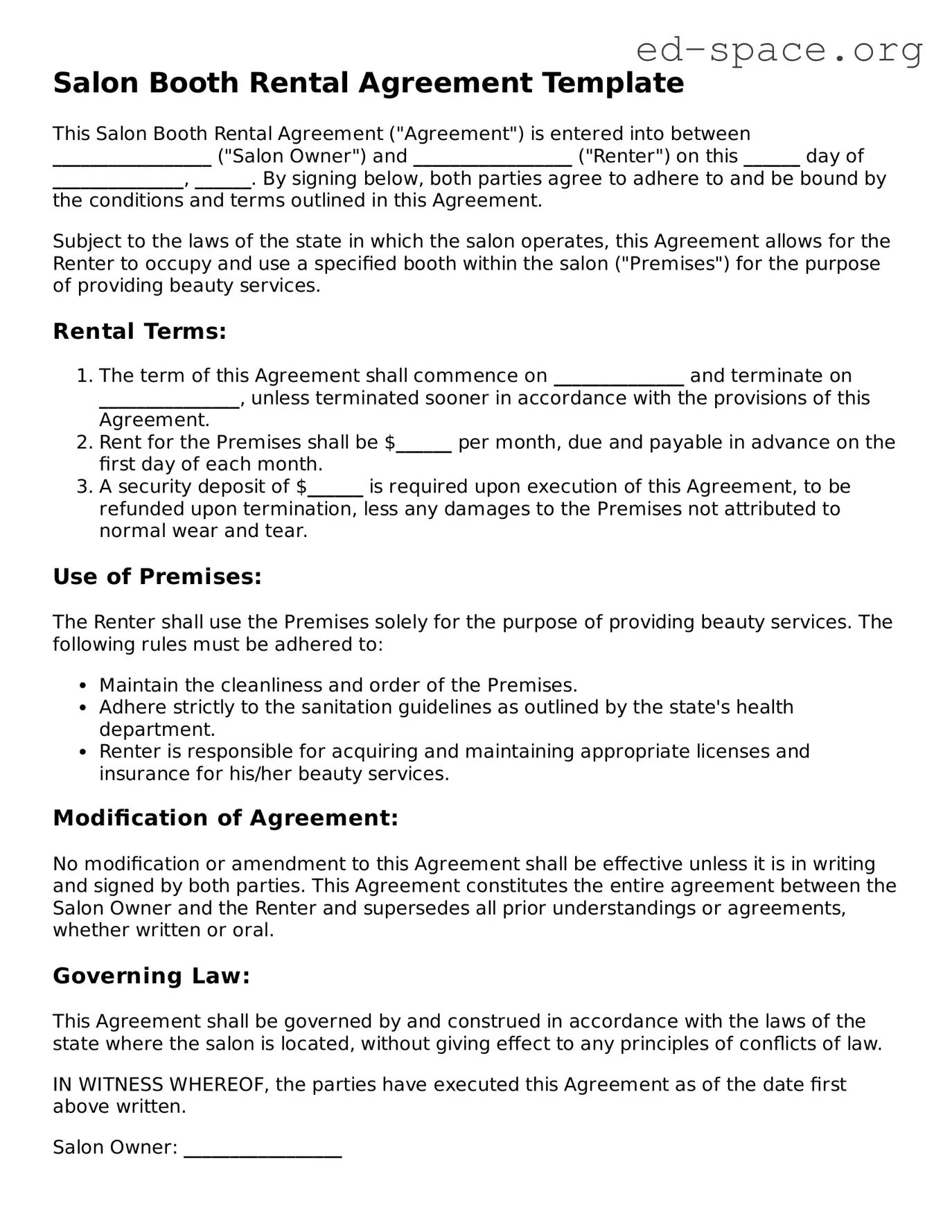What is a Salon Booth Rental Agreement form?
A Salon Booth Rental Agreement form is a legally binding document between a salon owner and an individual stylist or cosmetologist. It outlines the terms and conditions under which the stylist can use a space (booth) in the salon to provide services to their clients. This agreement typically includes details such as rental payments, duration of the rental, responsibilities of both parties, and any rules or regulations specific to the salon's operation.
Why is a Salon Booth Rental Agreement important?
This agreement is crucial as it ensures clarity and understanding between the salon owner and the stylist. It helps prevent misunderstandings by setting clear expectations regarding rent, use of salon facilities, and adherence to salon policies. It also offers legal protection for both parties in case of disputes, providing a reference point that outlines each party's rights and obligations.
What terms should be included in a Salon Booth Rental Agreement?
A comprehensive Salon Booth Rental Agreement should include terms such as the duration of the contract, rental amount and payment schedule, description of the space being rented, policies on use of common areas and equipment, insurance requirements, conditions for renewal and termination of the agreement, and any salon-specific rules or guidelines.
How often do rental payments need to be made under these agreements?
Rental payments are typically made on a weekly or monthly basis, but the specific schedule should be outlined in the Salon Booth Rental Agreement. The agreement should specify due dates, acceptable payment methods, and any late payment fees or penalties for non-compliance.
Can a stylist decorate their booth?
Whether a stylist can decorate their booth depends on the terms agreed upon in the Salon Booth Rental Agreement. Most agreements allow for personalization of the space within guidelines to maintain the overall aesthetics of the salon. These guidelines should be clearly stated in the agreement.
What happens if either party wants to terminate the agreement early?
Conditions for early termination should be specified in the Salon Booth Rental Agreement. This includes notice periods (typically 30 days), any financial penalties, and the procedure for vacating the booth. It ensures that both the salon owner and the stylist understand the consequences and steps involved in ending the contract prematurely.
Is it necessary for a Salon Booth Rental Agreement to be signed by both parties?
Yes, it is essential for both the salon owner and the stylist to sign the Salon Booth Rental Agreement. A signature from both parties makes the agreement legally binding and signifies that both have read, understood, and agreed to the terms and conditions outlined in the document.
How can disputes arising from the Salon Booth Rental Agreement be resolved?
Dispute resolution methods should be outlined in the agreement itself. Common approaches include negotiation between the parties, mediation through a third party, or arbitration. In case these methods fail, legal action may be considered as a last resort. It is important for the agreement to specify the preferred method of dispute resolution to avoid unnecessary legal conflicts.
